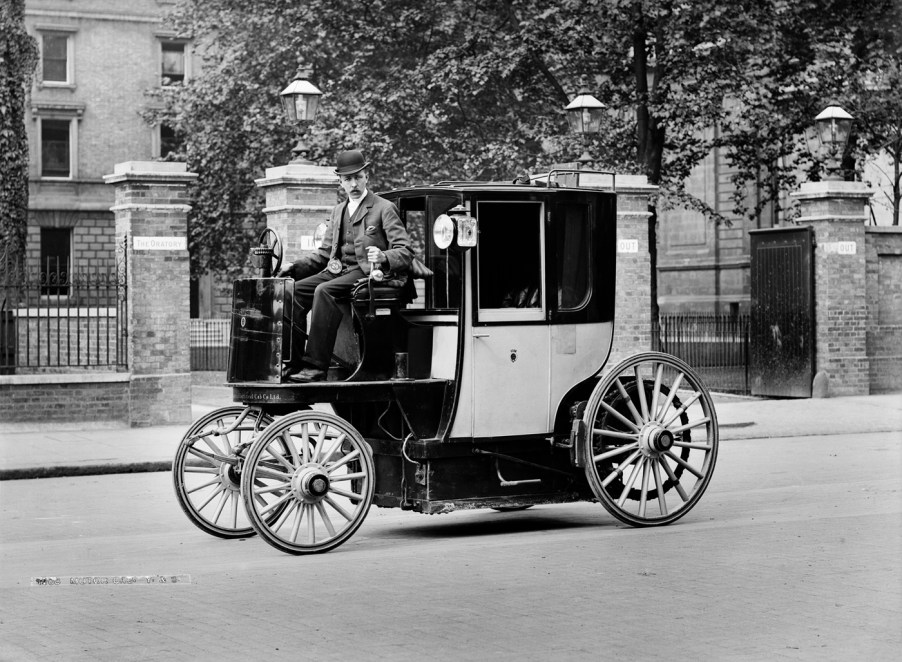
The First EV Is Centuries Older Than You Think With Modern Problems
Electric vehicles may seem like a new idea. However, they’ve recently reached a new level of popularity compared to botched releases during the past couple of decades. The first electric car rolled out centuries earlier than you think but had the same problems as modern electric cars.
When did the first electric car come out?
The first electric car in America dropped in 1832, making it 192 years old. The first crude EV was developed by Robert Anderson, but electric cars didn’t become practical until the 1870s.
In 1889, William Morrison from Des Moines, Iowa created the first successful electric car. It was more like an electric wagon because it could up up to nine passengers.
He used advertisements to show that EVs weren’t that different from gas-powered models, which is still true today. For example, the Ford F-150 and Lightning have almost the same exact interiors and features, minus the front trunk.
EVs became pretty popular against gas and steam-powered vehicles because they were quiet, easy to drive, and didn’t emit smelly pollutants. Gas-powered vehicles did require some muscle to start up at the time.

By 1912, EVs were responsible for a third of all vehicles on the road. But when the Model T came out as an affordable option with an electric starter, EV popularity began to fade.
Plus, more and more gas stations were being built, making it easier to refuel gas-powered options. Charging stations weren’t exactly popular.
People complained that electric vehicles didn’t have enough range and took too long to charge. These are the biggest complaints about modern EVs too. But auto manufacturers have only had roughly 200 years to figure out solutions.
As gas prices increased and with the electric Lunar Rover revealing on the moon, interest in EVs returned in the 1970’s. This is when the Sebring-Vanguard CitiCar was popular with its 60-mile range.
The interest faded due to a lack of range and efficient charging solutions again. In the 1990’s EVs came back around with the General Motors EV1 gaining interest.
But things stalled until Martin Eberhard and Marc Terpenning founded Tesla and built EVs with over 200 miles of range. That’s right, Elon Musk didn’t start Tesla and he doesn’t own it.
Since then, electric car varieties and charging stations have been increasing. However, Americans still have range anxiety and complain about charging times. Since the first electric car arrived, history has been repeating itself.



